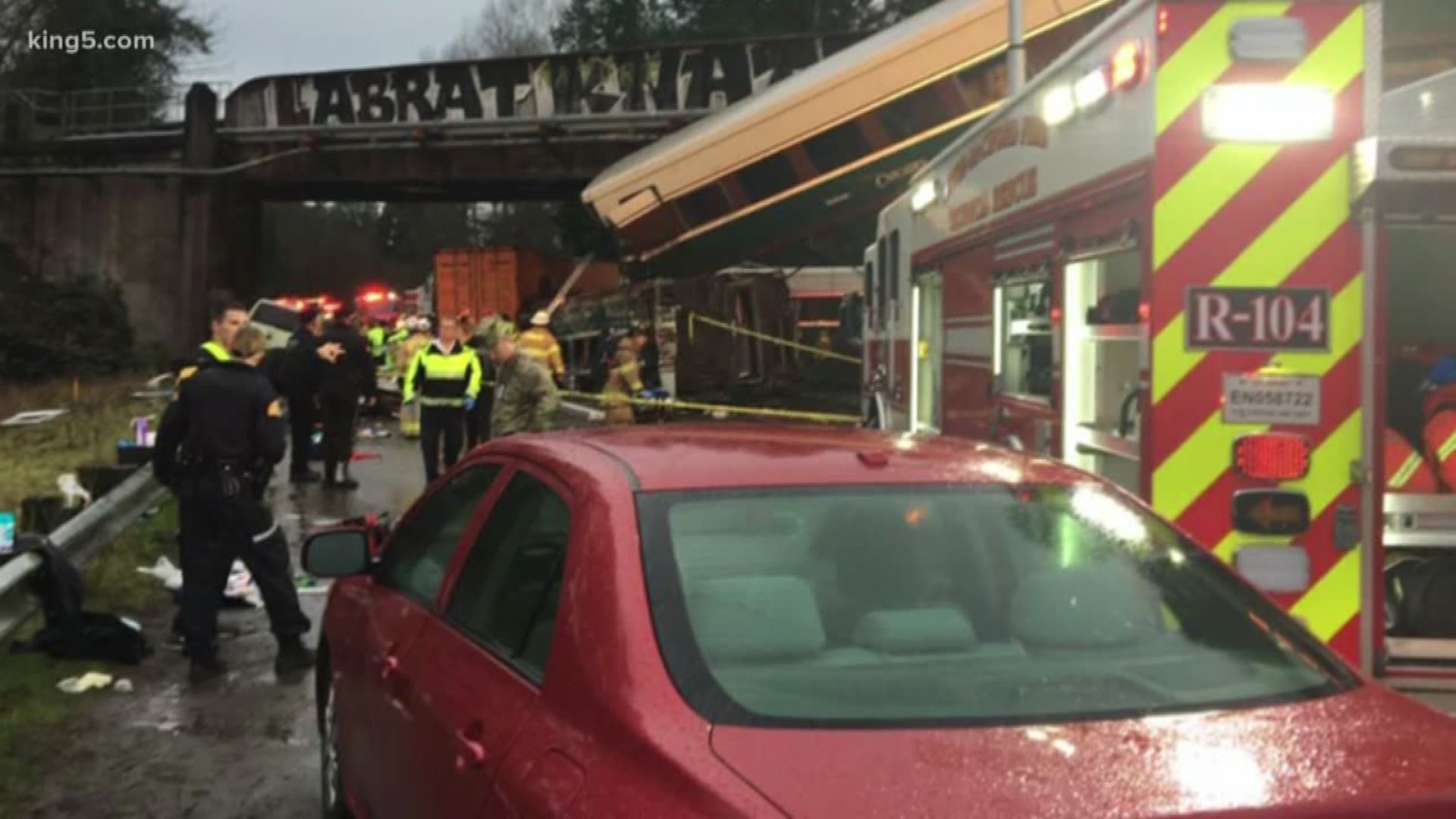A National Transportation Safety Board (NTSB) hearing into the high-speed derailment of Amtrak train 501 in December 2017 is nothing short of scathing.
During its inaugural run, the Amtrak-operated train derailed and flew off a 30-mph curve. Cars came crashing down onto traffic below a bridge crossing southbound I-5. Three passengers aboard the train were killed, and others aboard the train and in vehicles below were injured, many seriously.
The NTSB determined Tuesday the probable cause of the crash was Sound Transit's failure to provide effective mitigation for the curve without the safety system positive train control in place. That allowed the engineer to enter the curve too quickly. His inadequate training on the territory and new equipment also played a role in the cause.
The engineer, while experienced, had little training in the new Siemens Charger locomotive. He missed a warning sign two miles before the curve indicating a speed restriction would be coming up. A half-mile before the curve he missed another speed limit sign because he was distracted by a safety device that had gone off inside the cab.
He was also not aware of the device, used to warn the engineer the train was traveling too fast, because of limited training. The device was designed to warn the engineer with a noise and warning lights on two screens, that he was going too fast.
In this case, the train was traveling 82 miles per hour, which is over the speed limit for the upgraded line known as the Pt. Defiance Bypass - a shortcut to speed train times between Tacoma and Portland.
NTSB staff said because the engineer was focused on what was happening inside the cab, he missed the last sign and another signal.
The NTSB said the engineer received three “orientation trips.” Two of them were northbound, one trip was southbound. So, the engineer was making his second southbound trip when the derailment occurred. The trips were also made at night.
An experienced conductor was in the cab receiving his own orientation during the trip. Though NTSB staff said he did nothing wrong, he also regarded his trip as a learning experience, and did nothing to aid the engineer in calling out signs, signals or other warnings that the trip was not going as planned. In taking a page now widely used in aviation, the NTSB recommends that any crewmember in the cab speak up, even try and stop the train, in what’s known as CRM, or Crew Resource Management.
The NTSB investigation also had plenty to blame on Sound Transit, which owns the line. The Washington State Department of Transportation (WSDOT) which owned the train had oversight of the upgrade of the once slow-moving freight tracks to an otherwise high-speed passenger rail corridor. The NTSB said the timetable provided to crews had outdated information and failed to note the speed restriction at mile post 19.8, and that the area was a “crew focus area” for safety, a mitigation method because WSDOT and the federal grants it received could not cover the cost of replacing the old bridge with a newer one capable of higher speeds. It said the WSDOT’s oversight consisted of only one staff member, who did not flag any problems despite 34 visits to the line during its upgrade and how it would be operated. It cited the Federal Railroad Administration for similar oversight failings.
The NTSB said the Spanish Designed Talgo train, where two cars share a pair of wheels, did not meet new federal safety designs for passenger equipment which came out in 1999. Instead, the train was grandfathered in under the old rules with additional requirements that the wheel sets have additional cables installed to keep the wheels from breaking away in a wreck. The investigation found that two of the three fatalities were due to wheelsets, or “rolling assemblies” coming loose and penetrating the rail cars. Another rolling assembly shot like a missile across I-5, hitting two vehicles.
Sound Transit issued the following statement on Tuesday:
“This Nisqually Amtrak accident causing three fatalities and numerous injuries was a terrible tragedy that sears in the memory of all of us at Sound Transit. We continue to extend our deep sympathies to all of the individuals and families affected. While Sound Transit does not operate any service in the segment of track where the accident took place, as owner of the track we commit to closely reviewing the NTSB’s report and implementing recommendations in collaboration with Amtrak, the Washington State Department of Transportation, BNSF and the Federal Railroad Administration.
"Ahead of the report Sound Transit has already worked with partners to implement graduated speed limits and supplementary signs as well as crew communications requirements, as the NTSB today recommended. PTC is now fully operational in the corridor.”


